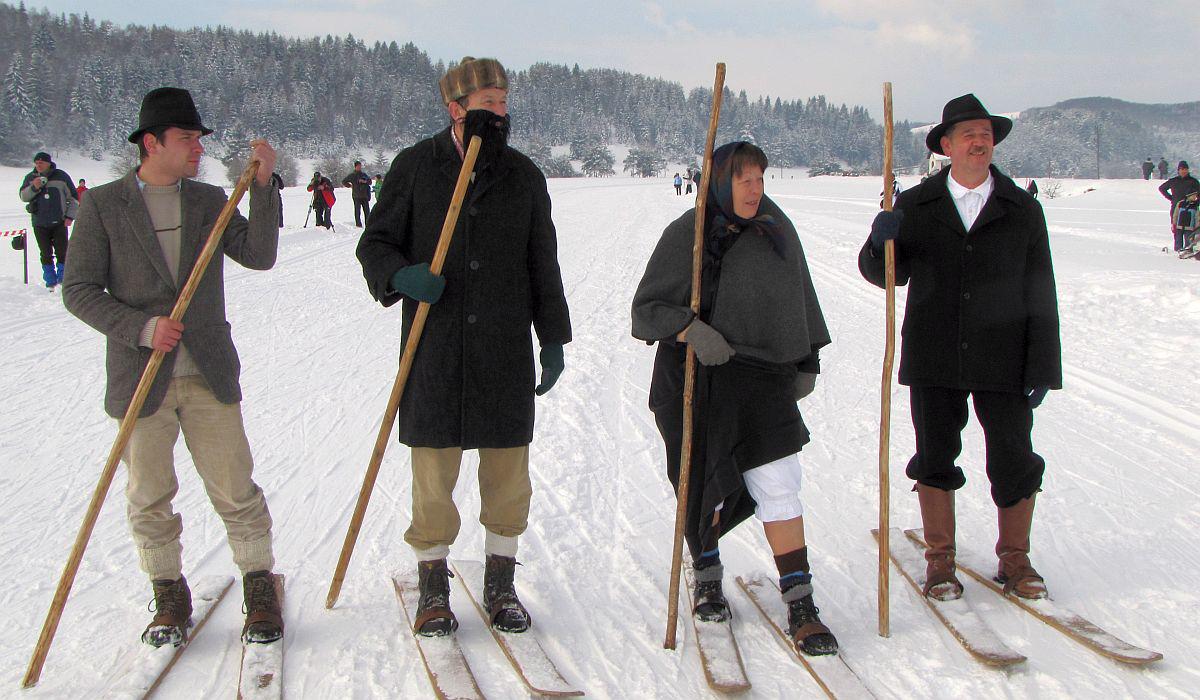The modern sport of skiing most likely originated in Scandinavia, but the skiing tradition of Slovenia’s Bloke Plateau also dates back many centuries. In fact, Central Europe’s first skiers were Slovenian.
The Bloke Plateau in southern Slovenia is an area of heavy snowfall, few inhabitants, and significant distances between small, widely scattered settlements. It is in this high-altitude environment that skiing emerged – independently of Scandinavian influences – many centuries ago. The skis were simple, homemade boards that the local craftsmen had curved on one side. Even the process of shaping them was difficult: The wood could only be curved after being placed in boiling water for several hours. (The skis had to be curved regularly, because the wood had the tendency to straighten out over time.)
The skis were attached to boots with a leather strap. (Originally, withies from willows were used instead.) Bloke skiers also used a stick for support and directional control. The set-up made it possible for the locals to transverse even the most difficult terrain.
The first author to write about the skiers of Bloke was Johann Weikhard Valvasor. In his magisterial 1689 work The Glory of the Duchy of Carniola, he described “an invention” that he had never seen in any land – wooden boards used by locals to glide at great speeds across snowy terrain. Valvasor even provided a detailed description of the skis’ dimensions – they were a quarter of an inch thick, half a foot wide, and five feet long.
The “invention” described by Valvasor was used by the locals to move between houses and villages. In the winter, much of daily life was conducted on skis: People would go to everything from mass to hunting trips on skis. Even the beginning and the end of life were associated with this means of transportation. Newborns were often brought to their christening ceremonies on skis, and specially modified skis were used to transport caskets to the village cemetery during wintertime funerals.
As late as in the interwar period, skis were used for everyday transportation on the Bloke Plateau. In 1932, the skiers of Bloke were even the subject of a film directed by Metod Badjura, a pioneer of Slovenian film.
While other means of transportation have since replaced skis for daily activities on the Bloke Plateau, cross-country skiing remains a popular winter pastime in the area. But the Bloke skiers have left another mark: They gave the Slovenian language their word for skiing – “smučanje” --, making Slovenian one of the few European languages with its own word for the centuries-old sport.


































































